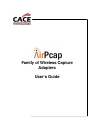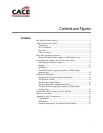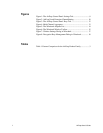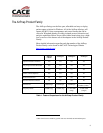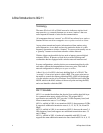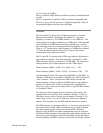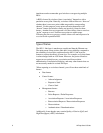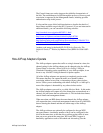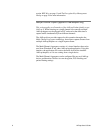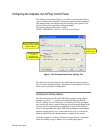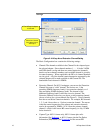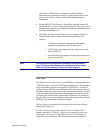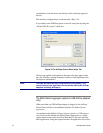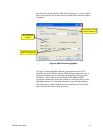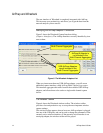
6 AirPcap User’s Guide
interference and accommodate good wireless coverage using multiple
BSSs.
A BSS is formed by wireless clients “associating” themselves with a
particular access point. Naturally, a wireless client will have to “discover”
whether there is an access point within range and its corresponding
channel. For this purpose, access points advertise themselves with
“beacon” frames and wireless clients can (passively) listen for these
frames. Another discovery approach is for the wireless client to send out
“probe” requests to see if certain access points are within range.
Following the discovery process, wireless clients will send requests to be
associated with a particular BSS.
Types of Frames
The 802.11 link layer is much more complicated than the Ethernet one.
The main reason is that wireless links have lower reliability compared to
the reliability of wired links, and therefore the 802.11 link layer has
features to reduce the effects of frame loss. For example, every data frame
is acknowledged with an ACK frame. Moreover, the protocol needs to
support access point discovery, association and disassociation,
authentication, wired/wireless bridging, and many other features that are
not necessarily needed in a wired link layer.
When capturing on a wireless channel, you will see three main kinds of
frames:
• Data frames
• Control frames
o Acknowledgement
o Request to Send
o Clear to Send
• Management frames
o Beacons
o Probe Requests / Probe Responses
o Association Requests / Association Responses
o Reassociation Requests / Reassociation Responses
o Disassociations
o Authentications / Deauthentications
Additionally, frame headers may contain Quality of Service (QoS) and
High Throughput (+HTC) information.



